Abstract
Groman, Neal B. (University of Washington, Seattle). Temperature and the reproduction of two lambda-phage mutants. J. Bacteriol. 84:438–445. 1962.—A comparative study of phage λ, and mutants λtem and λ112, was made, with particular emphasis on the effect of elevated temperature (44 C) on phage reproduction. Phage λtem was selected at 44 C and λ112 was isolated from the late-lysing fraction of bacteria at 37 C. All three phages are similar in their host range, immunity pattern, and in the rate of inactivation of free phage by anti-λ antibody and heat. Differences were observed in their plaque size and in their relative plating efficiency at 37 and 44 C. One-step growth curve studies showed that phages λ and λtem are similar in the time intracellular phage appears and in their rate of maturation at 37 C. These time and rate parameters were unchanged at 44 C. Both λ and λtem exhibited a reduced latent period at 44 C. However, the latent period of λtem was longer than that of λ at both 37 and 44 C, and its relative 44 C/37 C yield was about 40% while that of lambda is about 3%. Phage λtem may be characterized as a λ mutant with an altered latent period. Phage λ112 was similar to λ and λtem at 37 C, but at 44 C behaved quite differently. The time of appearance of intracellular phage was delayed, compared to 37 C, and the rate of maturation was slower. Phage production at 44 C was about 16% that at 37 C. On further investigation, it was observed that induced Escherichia coli K-12 (λ112) failed to lyse at 44 C, although it did lyse at 37 C. Lysis inhibition was imposed almost immediately by transferring cells from 37 C to 44 C at any time during the reproductive cycle, including the lytic phase. The behavior of λ112 at 44 C disposed of the possibility that the lytic step was the only step in the phage cycle sensitive to variations in temperature. However, it appeared that the lytic step was a consistant target for its action.
Full text
PDF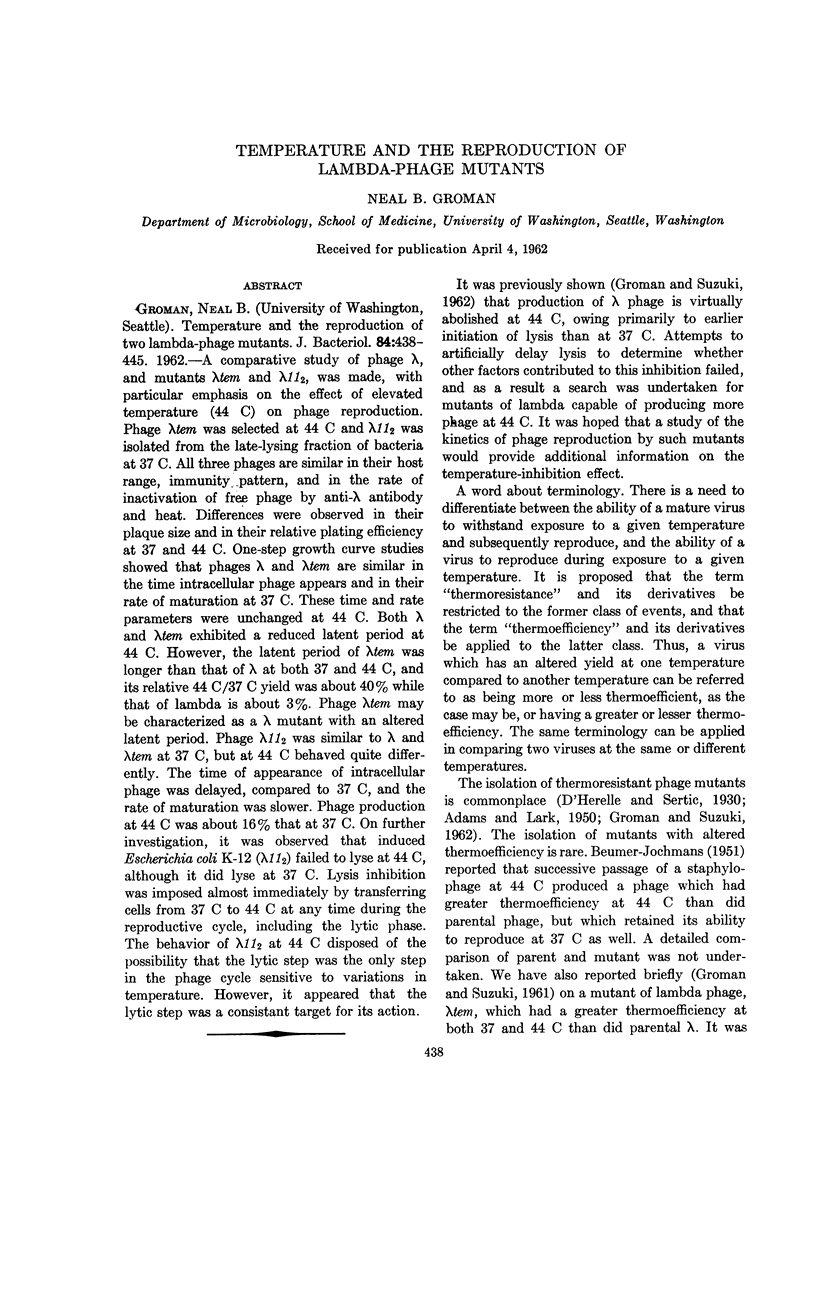
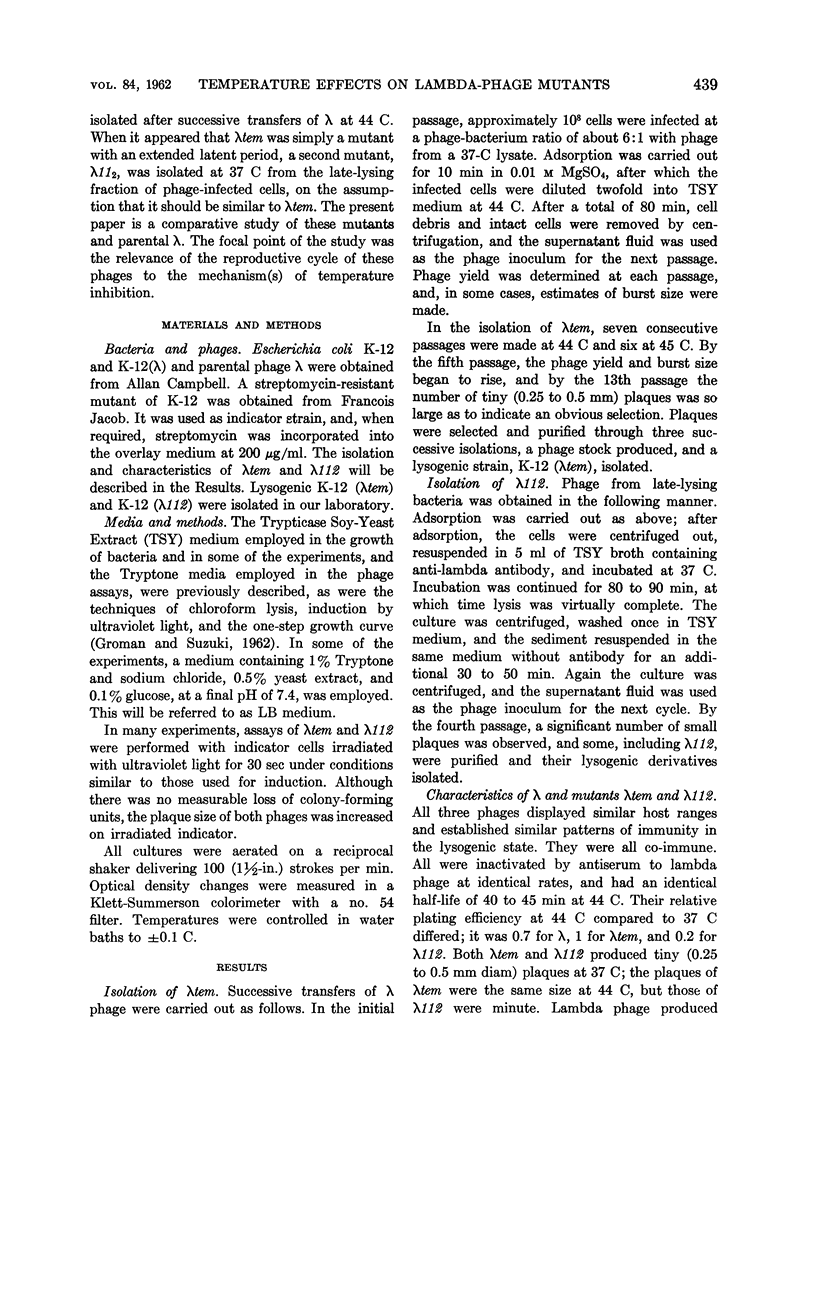

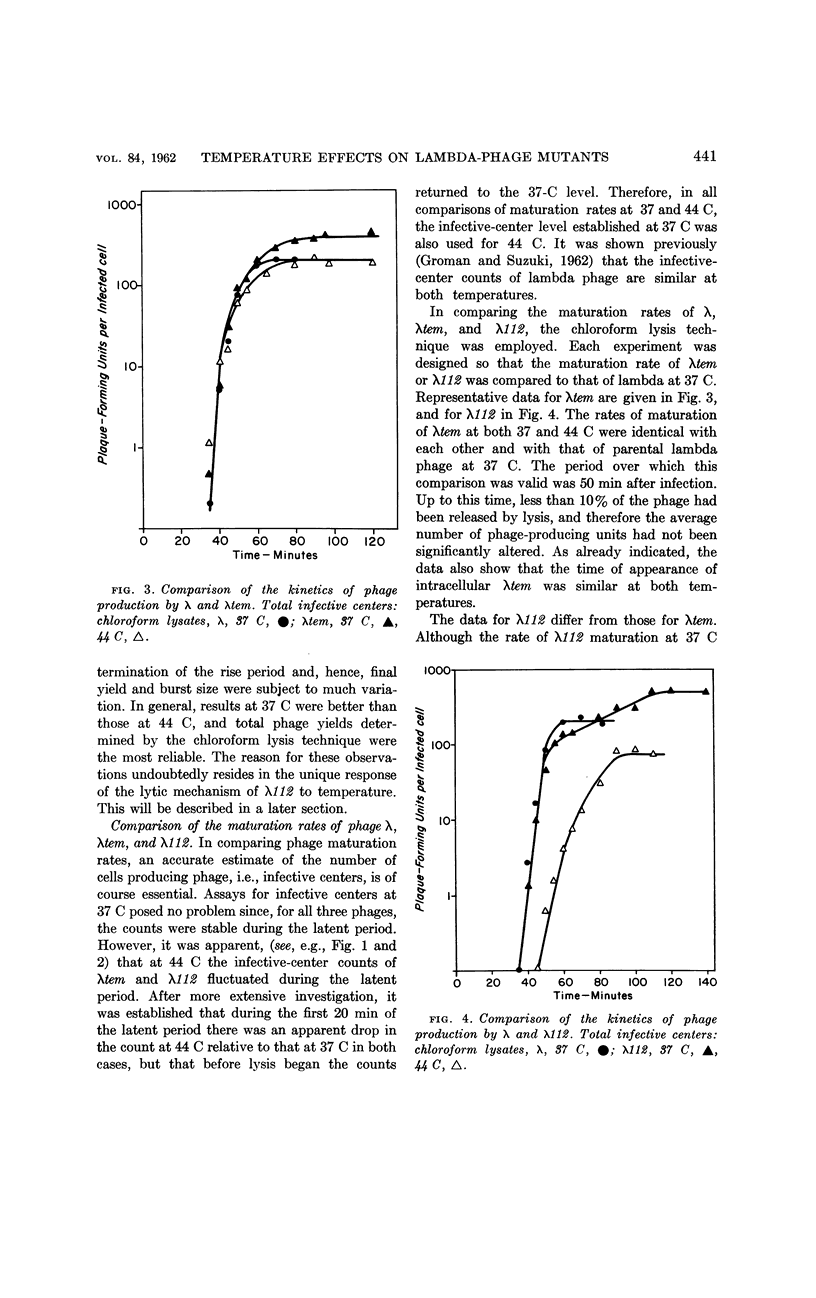
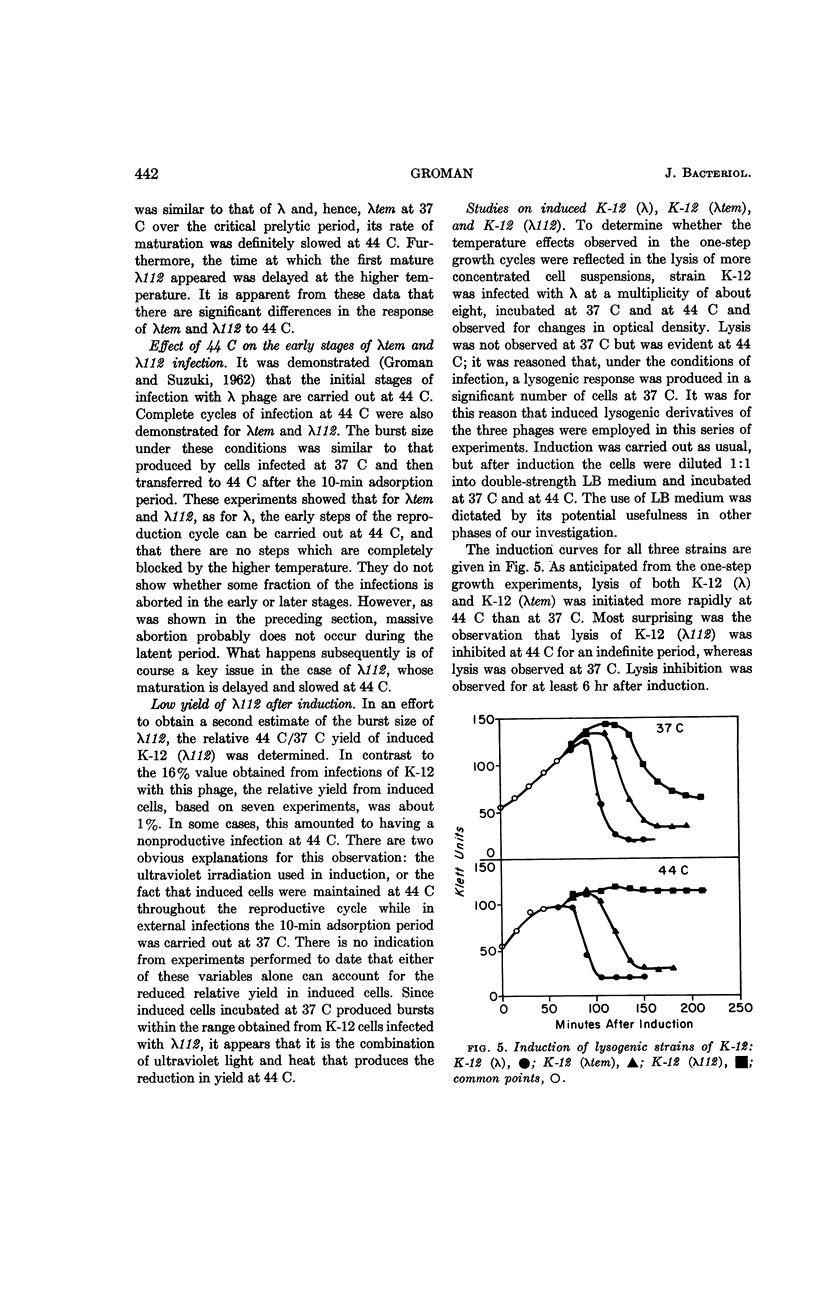


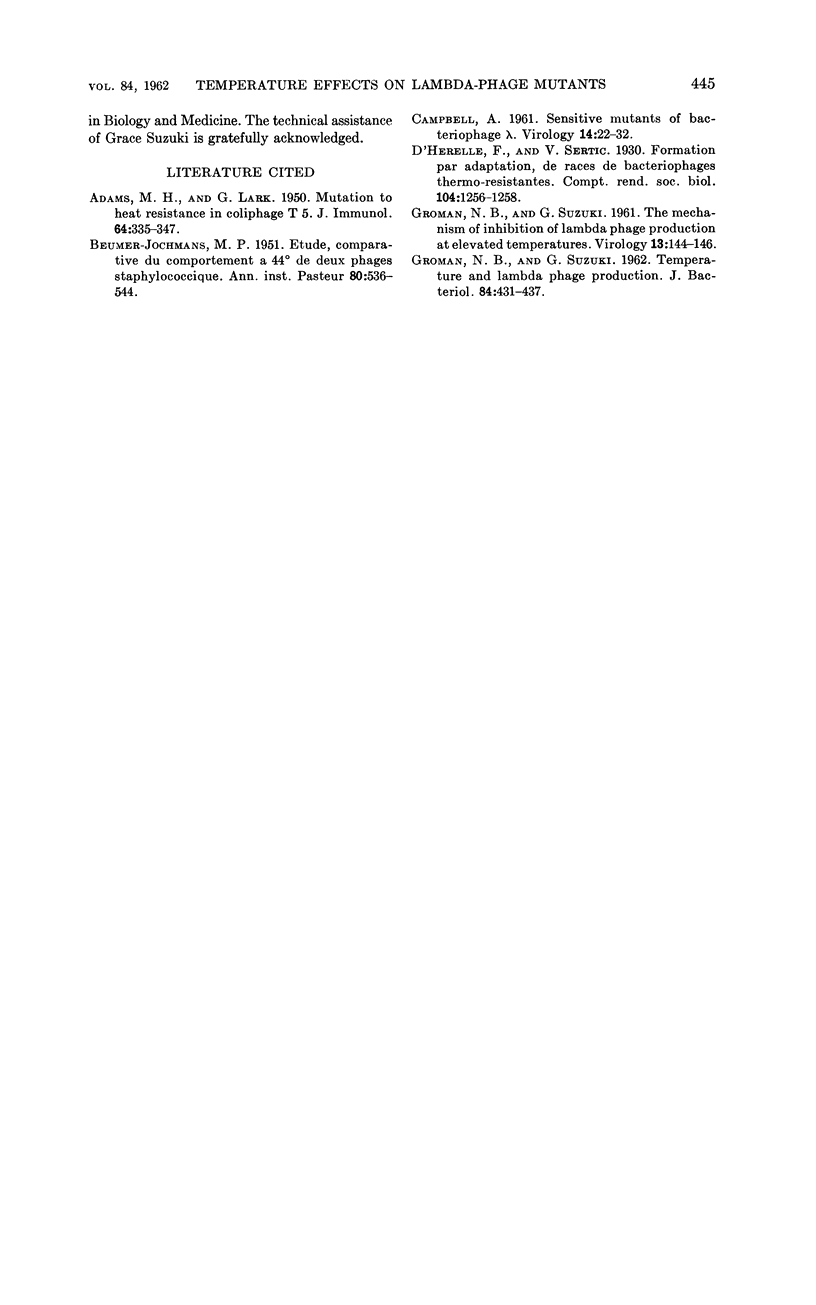
Selected References
These references are in PubMed. This may not be the complete list of references from this article.
- ADAMS M. H., LARK G. Mutation to heat resistance in coliphage T51. J Immunol. 1950 Apr;64(4):335–347. [PubMed] [Google Scholar]
- BEUMER-JOCHMANS M. P. Etude comparative du comportement a 44 degrees de deux phages staphylococciques. Ann Inst Pasteur (Paris) 1951 May;80(5):536–544. [PubMed] [Google Scholar]
- CAMPBELL A. Sensitive mutants of bacteriophage lambda. Virology. 1961 May;14:22–32. doi: 10.1016/0042-6822(61)90128-3. [DOI] [PubMed] [Google Scholar]
- GROMAN N. B., SUZUKI G. Temperature and lambda phage reproduction. J Bacteriol. 1962 Sep;84:431–437. doi: 10.1128/jb.84.3.431-437.1962. [DOI] [PMC free article] [PubMed] [Google Scholar]
- GROMAN N. B., SUZUKI G. The mechanism of inhibition of lambda phage production at elevated temperatures. Virology. 1961 Jan;13:144–146. doi: 10.1016/0042-6822(61)90045-9. [DOI] [PubMed] [Google Scholar]


